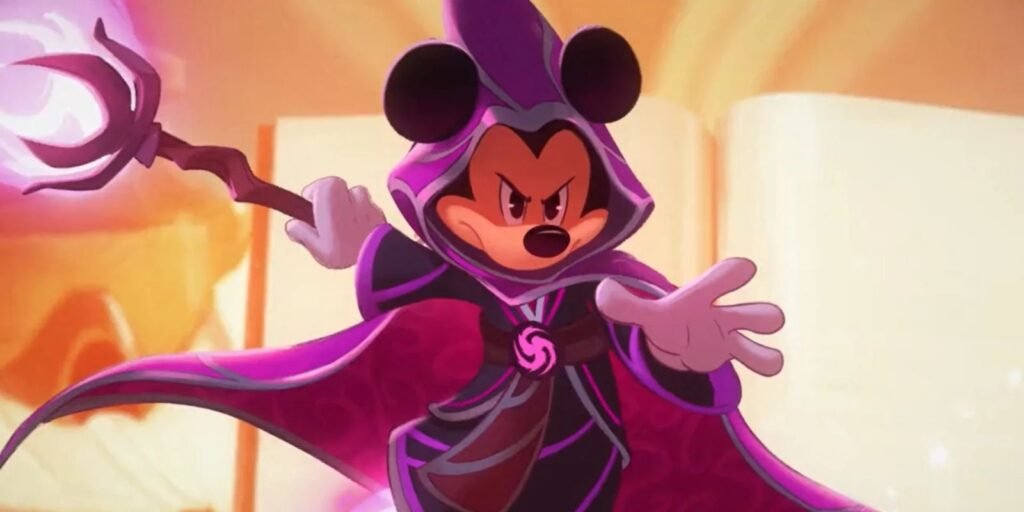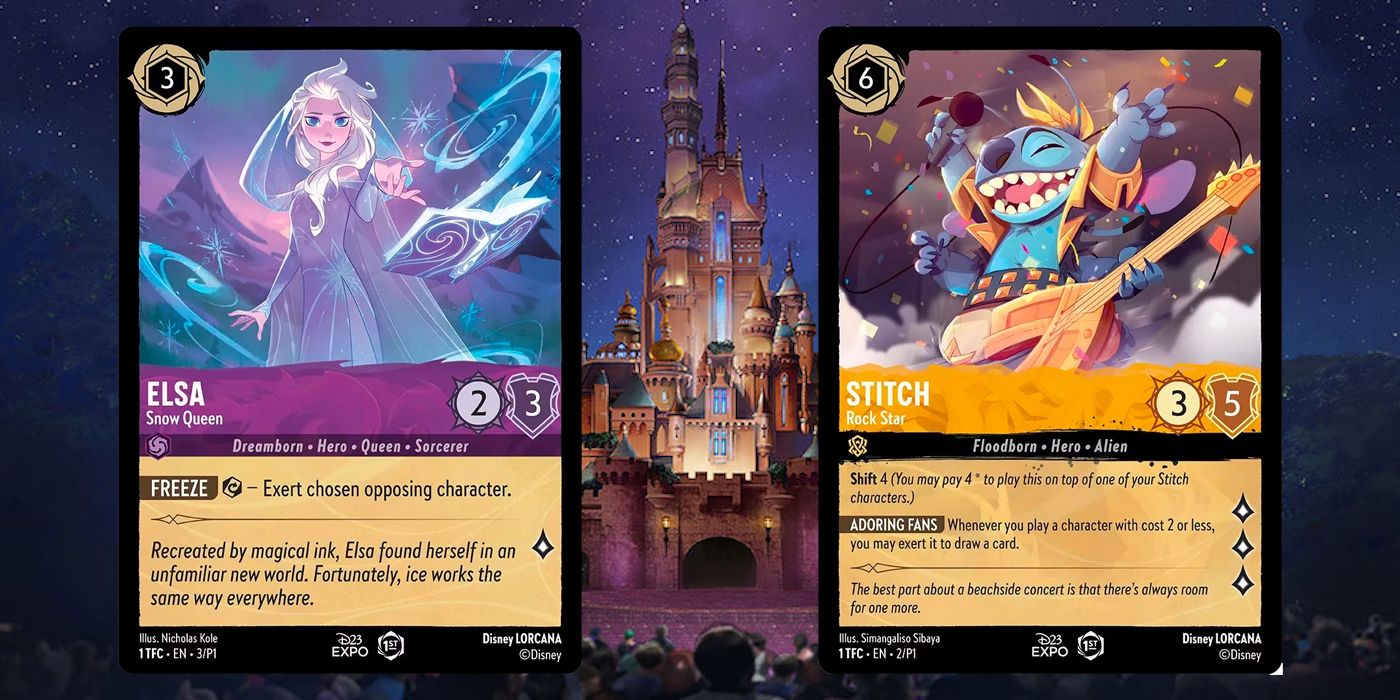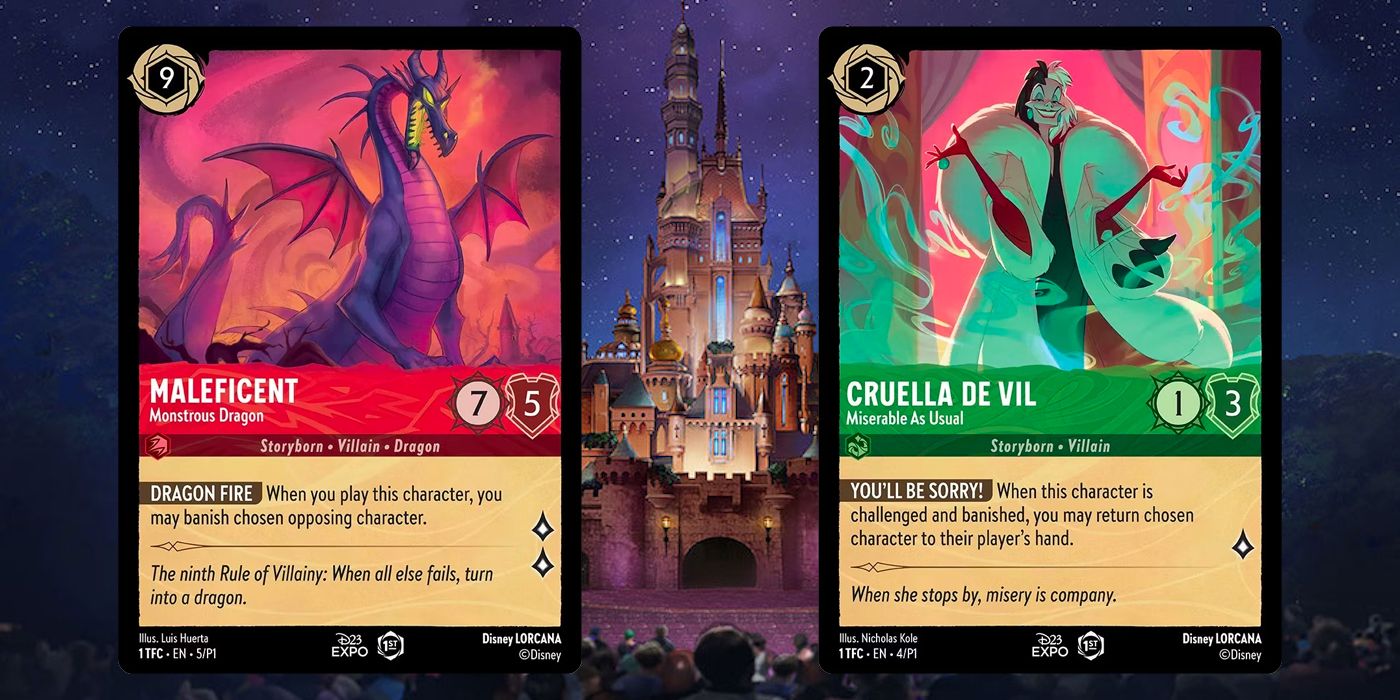
The trading card game space is difficult to break into. It’s been dominated for decades by its leading trinity: Magic: The Gathering, Yu-Gi-Oh! and Pokémon. Magic is eldest of the three and the one with the strongest mechanics, but Yu-Gi-Oh! and Pokémon have managed to trade off the popularity of their animated shows for the entirety of their existence. As such, the announcement of a new game is a hard sell. Existing players are usually heavily enfranchised, and it can be difficult to draw in new players without the rich history the other games have to offer.
However, if anyone can do it, it’s Disney. The Walt Disney Corporation recently showed off the first cards for Lorcana, its new TCG looming on the horizon. These cards give players their first glimpse into Disney’s strategy for its new game, and it just might be a winning hand. The new cards bear the colorful visages of the Disney characters the world loves so much alongside a simple ruleset that sits somewhere between Magic and Pokémon. Let’s take a look at these new cards, and break down what they can tell us about how Lorcana might play.
Lorcana Cards Exert to Use Abilities
One of the key factors that sets Magic apart from Yu-Gi-Oh! and Pokémon is the fact that lands and creatures “tap” (that is, rotate 90 degrees to indicate they’ve exhausted certain abilities) until the beginning of the player’s next turn, when they “untap.” That might sound simple, but it’s the basis of Magic‘s entire in-game economy, from when creatures are allowed to attack and block to how players pay for spells.
It doesn’t seem like Lorcana will have lands that tap for mana, but its creatures will still “exert” themselves to pay for abilities. Exert is a bit clunky, but makes sense as a way to avoid thorny copyright issues. For example, Elsa, Ice Queen can exert herself to do the same to an enemy creature, representing her ice powers. Meanwhile, Stitch, Rock Star can exert his fans (as represented by small creatures) to draw cards. He also has the “Shift” mechanic, which lets him come out at a lower cost if played over another Stitch card.
Some Disney Lorcana Cards Are Evasive
Another keyword that really shows how much Lorcana is taking from Magic is Evasive. In Pokémon and Yu-Gi-Oh!, creatures don’t have any sort of evasion. They battle each other directly, and while the occasional effect preventing that certainly exists, it’s not a core mechanic. Lorcana cards will clearly also fight each other (as evidenced by the reminder text for Evasive mentioning “challenging”), but Evasive provides an additional layer for how they can and can’t interact.
In Magic, this is called flying — and is likely the game’s most popular mechanic. It’s certainly the evergreen keywords referenced on the most cards, and for good reason. Flying is both easy to understand and a critical part of ensuring a dynamic boardstate. Lower power games of Magic can often be dominated by what’s called a “board stall,” which is when both players build up massive armies of creatures but neither wants to attack first and risk a disadvantage in doing so. Flying provides a way around this, and while it remains to be seen if Evasive will be just as critical, it’s likely to serve a similar purpose overall.
Lorcana’s Heroes & Villains Don’t Die – They’re Banished
The last two cards that can tell us something about the game’s mechanics are Maleficient and Cruella de Vil. The text here is subtle, but important. When two creatures challenge each other, it’s possible for one of them to be defeated and leave the playing field. The game references this event as being “banished,” as evidenced by Cruella de Vil’s “You’ll Be Sorry” ability. While a bit confusing (both Magic and Yu-Gi-Oh! use banish/exile to reference a card being nigh-permanently removed from the game), it makes sense for Disney to want to be a bit more family-friendly and avoid directly referencing death on their cards.
Both cards also serve as good examples of the game’s overall template for cards. Art takes up most of the top half of the card, with the cost to play the card nestled in the top left corner. Below the art is a banner with the card’s name and epithet, alongside badges for an offensive and defensive stat, with numbers likely ranging from 0 to 10. A small typeline gives a smattering of types for the game to care about mechanically, and underneath that is the card’s abilities and flavor text. The only mysterious part of the card are the diamonds alongside the right side of the textbox, which could either represent rarity or some other, unknown stat key to how the game will be played.



